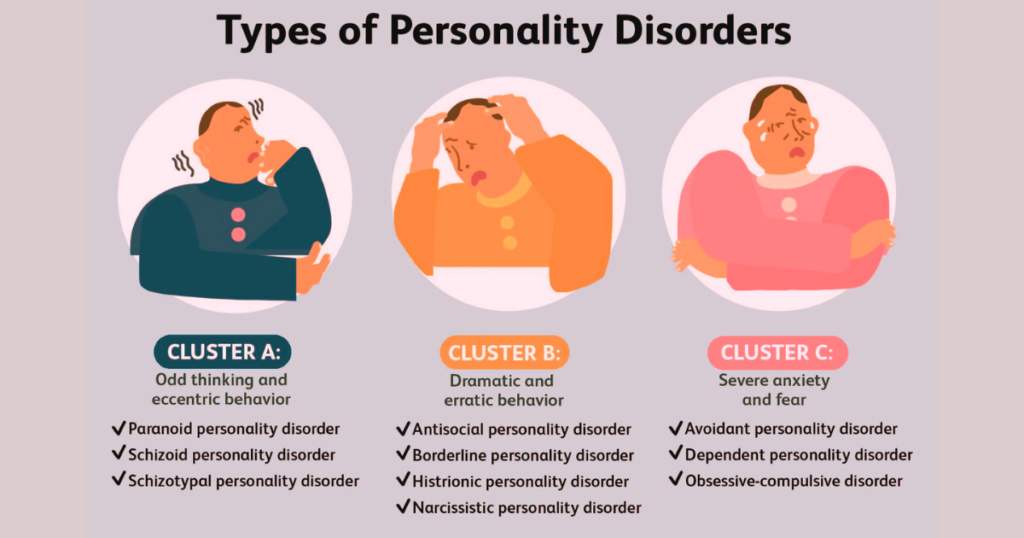
Narcissism is a personality trait that many people are familiar with. When we think of narcissism, we often picture someone who is loud, arrogant, and always craving attention. However, not all narcissists look this way. Some can be harder to spot. These individuals are known as covert narcissists. Understanding the covert narcissist definition and traits can help people recognize the subtle signs and protect themselves in relationships.
Key Takeaways
- A covert narcissist hides their need for control and admiration behind modesty or sensitivity.
- Common covert narcissist traits include passive-aggressiveness, victim mentality, envy, and subtle emotional manipulation.
- Unlike overt narcissists, covert ones may appear shy or insecure, making them harder to identify.
- Relationships with covert narcissists often involve guilt, confusion, and emotional exhaustion.
- Setting boundaries and seeking support are essential when dealing with a covert narcissist.
Covert Narcissist Definition
A covert narcissist is someone who shows signs of narcissistic personality disorder (NPD) but in less obvious ways. Unlike the classic “grandiose” narcissist who openly seeks admiration, a covert narcissist is often quieter, more introverted, and may even appear sensitive. However, deep down, they still carry the same need for validation, control, and superiority as other narcissists (Pincus & Lukowitsky, 2010).
In psychology, narcissism exists on a spectrum. At one end, there are people with healthy self-esteem. At the other, there are those with NPD, which is a diagnosable mental health condition. Covert narcissism falls under the umbrella of narcissism but tends to express itself in subtle, hidden behaviors (American Psychiatric Association, 2013).
Covert Narcissist Traits
Covert narcissists can be difficult to identify because they do not always match the stereotype of being boastful or arrogant. Some common covert narcissist traits include:
- Passive-Aggressive Behavior
Instead of openly criticizing or demanding attention, a covert narcissist may use sarcasm, backhanded compliments, or subtle digs to bring others down (Miller et al., 2011). - Victim Mentality
They often position themselves as the victim in situations, even when they are at fault. This allows them to gain sympathy and avoid responsibility. - Envy and Resentment
Covert narcissists may feel envious of others’ success or happiness but hide it under false humility. They may downplay someone else’s achievements to make themselves feel superior. - Emotional Manipulation
They use guilt trips, silent treatment, or withdrawing affection to control others. Unlike overt narcissists, their manipulation is more subtle and emotionally confusing. - Fragile Self-Esteem
Despite appearing selfless or modest, covert narcissists have a fragile sense of self-worth. They may act overly sensitive to criticism, even when it is constructive (Cain et al., 2008).
Covert Narcissist vs. Overt Narcissist
To better understand what is a covert narcissist, it helps to compare them with overt narcissists.
- Overt Narcissist: Outgoing, seeks attention, openly boasts, and craves admiration.
- Covert Narcissist: Reserved, may appear shy or modest, but still desires control and validation in hidden ways.
While overt narcissists are easy to spot, covert narcissists can fly under the radar because their behaviors often come across as insecurity rather than arrogance.
Relationships with a Covert Narcissist
Being in a relationship with a covert narcissist can be emotionally draining. Partners, friends, or family members may feel constantly guilty, confused, or unappreciated. Some common experiences include:
- Walking on eggshells to avoid upsetting them.
- Feeling emotionally manipulated through guilt or shame.
- Experiencing cycles of attention and withdrawal.
- Struggling with self-doubt due to their subtle criticism.
Because their tactics are not always obvious, it can take years for people to realize they are in a relationship with a covert narcissist (Miller et al., 2017).
Why Do People Become Covert Narcissists?
The exact causes of covert narcissism are still being studied. However, research suggests that it often develops from a mix of genetics, childhood experiences, and environmental factors. Children who grow up in environments with inconsistent praise, neglect, or emotional abuse may develop narcissistic traits as a way to protect themselves (Otway & Vignoles, 2006).
How to Deal with a Covert Narcissist
If you suspect someone in your life fits the covert narcissist definition, here are some strategies:
- Set Boundaries
Clear boundaries are essential. Do not allow manipulation or guilt-tripping to control your actions. - Stay Grounded
Remember that their behavior is about their insecurities, not your worth. - Limit Emotional Reactions
Covert narcissists often feed off emotional responses. Keeping calm and detached can reduce their control. - Seek Support
Talking with friends, family, or a therapist can provide validation and perspective. - Professional Help
While it is rare for narcissists to seek treatment, therapy can help those willing to work on their behavior. Cognitive-behavioral therapy (CBT) has shown some effectiveness in addressing narcissistic traits (Kealy & Ogrodniczuk, 2011).
Read more: How to stop being a narcissist?
Conclusion
So, what is a covert narcissist? In simple terms, it is someone who hides their narcissistic traits behind a mask of sensitivity, modesty, or victimhood. While they may not seem like the stereotypical narcissist, their behaviors can still cause significant harm to relationships and self-esteem.
Recognizing covert narcissist traits can help you set boundaries, protect your mental health, and make informed choices about who you allow into your life. By understanding the covert narcissist definition, you are better equipped to spot the signs early and navigate these complex dynamics.
References
American Psychiatric Association. (2013). Diagnostic and statistical manual of mental disorders (5th ed.). Washington, DC: Author.
Cain, N. M., Pincus, A. L., & Ansell, E. B. (2008). Narcissism at the crossroads: Phenotypic description of pathological narcissism across clinical theory, social/personality psychology, and psychiatric diagnosis. Clinical Psychology Review, 28(4), 638–656.
Kealy, D., & Ogrodniczuk, J. S. (2011). Narcissistic personality disorder: A review of prevalence, characteristics, and treatment. Journal of Psychiatric Practice, 17(2), 89–99.
Miller, J. D., Dir, A., Gentile, B., Wilson, L., Pryor, L. R., & Campbell, W. K. (2011). Searching for a vulnerable dark triad: Comparing factor 2 psychopathy, vulnerable narcissism, and borderline personality. Journal of Personality, 78(5), 1529–1564.
Miller, J. D., Lynam, D. R., Hyatt, C. S., & Campbell, W. K. (2017). Controversies in narcissism. Annual Review of Clinical Psychology, 13, 291–315.
Otway, L. J., & Vignoles, V. L. (2006). Narcissism and childhood recollections: A quantitative test of psychoanalytic predictions. Personality and Social Psychology Bulletin, 32(1), 104–116.
Pincus, A. L., & Lukowitsky, M. R. (2010). Pathological narcissism and narcissistic personality disorder. Annual Review of Clinical Psychology, 6, 421–446.
Mariam holds an MS in Sociology with a specialization in Medical Sociology and Social Psychology. With a strong academic background and extensive research work in both fields, she brings depth and clarity to complex topics. Her writing explores the intersection of society, health, and the human mind, making academic ideas easy to grasp and relevant to everyday life.


